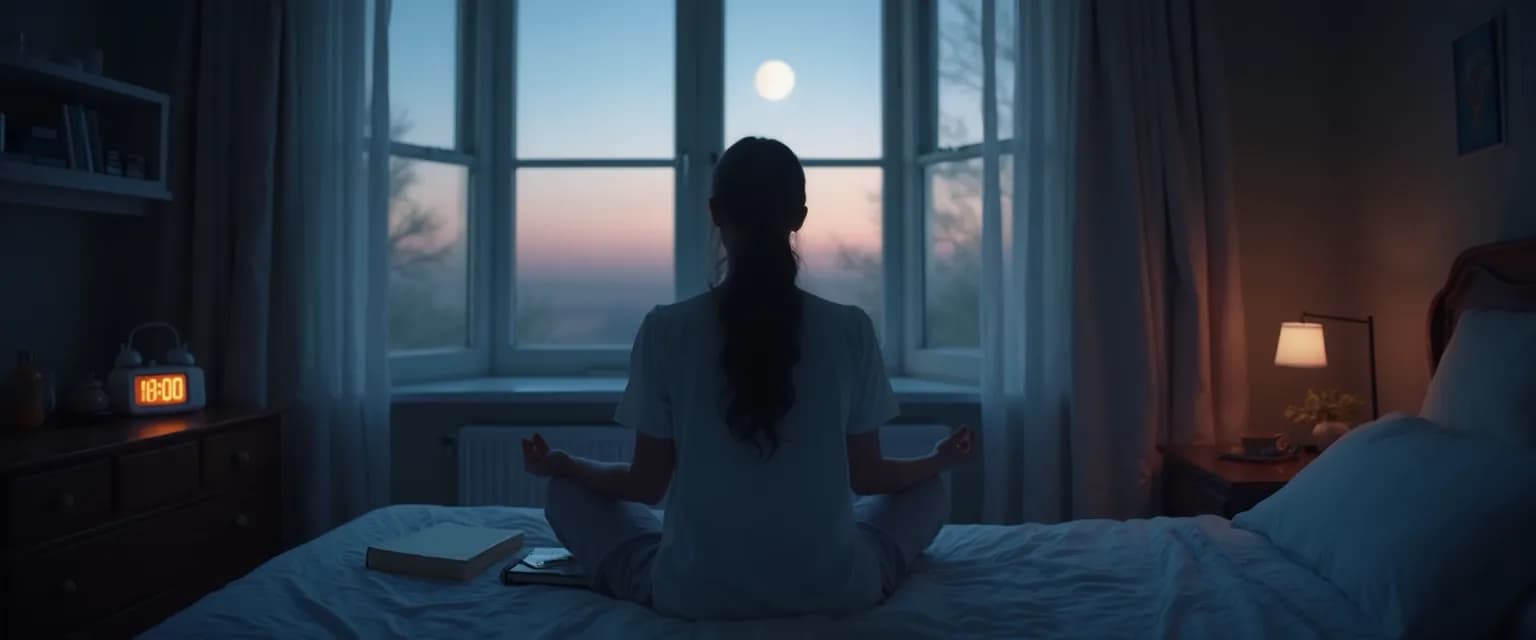Night Owl Anxiety: 7 Ways to Reset Your Circadian Rhythm Without Medication
Ever found yourself wide awake at 2 AM, mind racing with tomorrow's worries while the rest of the world sleeps? That classic night owl pattern isn't just disrupting your sleep—it's potentially fueling your anxiety. The relationship between anxiety and circadian rhythm disruption is bidirectional, creating a challenging cycle that can leave you feeling perpetually stressed and exhausted. When your internal body clock falls out of sync with the natural day-night cycle, both your physical and emotional well-being pay the price.
Research consistently shows that night owls often experience higher levels of anxiety, depression, and stress compared to those with more conventional sleep patterns. The good news? You don't need medication to reset your biological clock. Natural approaches can effectively realign your circadian rhythm and reduce those anxious feelings that keep you up at night. Let's explore how anxiety management techniques focused on your sleep-wake cycle can transform your mental well-being.
Understanding and addressing anxiety and circadian rhythm disruption is becoming increasingly important in our 24/7 connected world, where artificial light, inconsistent schedules, and digital devices constantly challenge our natural rhythms.
How Circadian Rhythm Disruption Fuels Your Anxiety
Your body's internal clock does more than just regulate sleep—it orchestrates a complex symphony of hormones that influence your mood and stress response. When anxiety and circadian rhythm disruption occur together, cortisol (your primary stress hormone) production becomes irregular, often remaining elevated when it should be winding down in the evening.
This hormonal imbalance creates a neurobiological environment primed for anxiety. Your amygdala—the brain's fear center—becomes more reactive, while the prefrontal cortex, responsible for rational thinking, shows reduced activity. The result? Heightened emotional responses and diminished ability to regulate those feelings.
The sleep-anxiety cycle becomes self-perpetuating: anxiety makes falling asleep difficult, leading to later bedtimes. This circadian misalignment then disrupts emotional regulation the next day, creating more anxiety, and the pattern continues. Signs your body clock might be contributing to your anxiety include:
- Feeling most alert and creative late at night
- Struggling to fall asleep before midnight despite feeling tired
- Experiencing anxiety that peaks in the evening hours
- Feeling groggy and irritable throughout the morning
Breaking this cycle requires addressing both the anxiety and the emotional patterns that have become intertwined with your disrupted sleep schedule.
7 Natural Methods to Reset Your Circadian Rhythm and Reduce Anxiety
Ready to realign your body clock and calm your mind? These science-backed strategies target anxiety and circadian rhythm disruption simultaneously:
1. Morning Light Anchoring
Expose yourself to bright natural light within 30 minutes of waking. This powerful zeitgeber (time-giver) signals your brain to suppress melatonin and boost alertness. Just 15-20 minutes can recalibrate your circadian rhythm and improve mood regulation.
2. Consistent Sleep-Wake Schedule
Maintain the same sleep and wake times—even on weekends. This consistency reinforces your body's natural rhythm and helps regulate cortisol production patterns that influence anxiety levels.
3. Strategic Evening Wind-Down
Create a 60-minute pre-sleep routine that signals your brain it's time to relax. Incorporate activities like gentle stretching, reading, or mindfulness techniques that lower your stress response.
4. Time-Restricted Eating
Limit eating to a 10-12 hour window during daylight hours. This aligns your digestive processes with your circadian rhythm and improves metabolic health, which influences mood regulation.
5. Temperature Regulation
Lower your bedroom temperature to 65-68°F (18-20°C) at night. This drop mimics natural body temperature fluctuations that promote deep sleep and anxiety reduction.
6. Digital Sunset
Implement a technology curfew 90 minutes before bed. Blue light from screens disrupts melatonin production, while content consumption keeps your mind activated when it should be winding down.
7. Strategic Movement Timing
Exercise earlier in the day to promote alertness, or try gentle yoga or stretching in the evening to release physical tension without stimulating your system.
Breaking Free from Circadian Rhythm Disruption and Anxiety
Let's create your personalized circadian reset plan. Start by implementing just two strategies from the list above—perhaps morning light exposure and a consistent wake time. After a week, add another element. This gradual approach prevents overwhelm and builds sustainable habits.
Track your progress using a simple mood and sleep log to identify patterns and improvements. Most people notice reduced anxiety symptoms within 2-3 weeks of consistent practice, though complete circadian realignment may take 4-6 weeks.
Remember that addressing anxiety and circadian rhythm disruption is a process, not an overnight fix. Your body has been operating on its current schedule for some time, and gentle, consistent adjustments will yield better results than dramatic changes. With patience and persistence, you'll find yourself falling asleep earlier, waking more refreshed, and experiencing noticeably reduced anxiety levels throughout your day.




